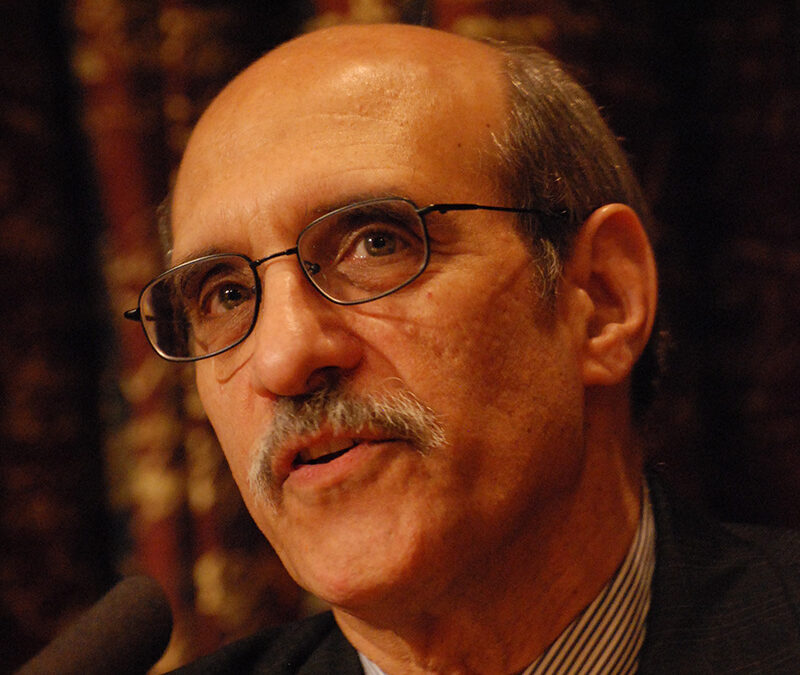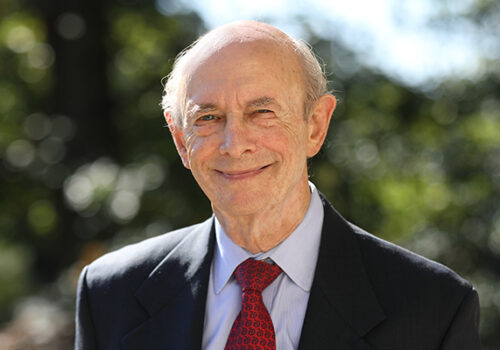On December 10th, in a dark and rainy Stockholm, Martin Chalfie received the Nobel Prize in Chemistry from the hands of His Majesty the King of Sweden.
He shared the Prize with two other scientists for the discovery and development of green fluorescent protein, a marker tool used today in almost every cell biology lab in the world.
Martin Chalfie is Professor and Head of the Department of Biological Sciences at Columbia University in New York City. When I talked to him on the phone I began by asking him if getting the Nobel Prize has changed his life in any way.
“It is of course a great honor, but I hope I will continue to get invitations to smaller meetings in my own field too.”
“Actually I’m still waiting to see the effects, but I’m very curious about how it will be perceived. Will we get more post-doc applications, for example? I guess it is too soon to tell. One thing I have noticed though is an increasing number of invitations to meetings, conferences and symposiums, some in categories quite peripheral to my research field. It is of course a great honor, but I hope I will continue to get invitations to smaller meetings in my own field too,” he says.
The discovery
Martin Chalfie’s bright idea came when he was attending a seminar about neurobiology of bioluminescent organisms in 1989. The jellyfish Aequoria Victoria with its green fluorescent protein (GFP), which emits green light under UV light, caught his interest in particular. The protein was first identified by one of the other two laureates, Osamu Shimomura, in the early 1960s.
During the seminar, Martin Chalfie realized the potential of the protein and started imagining what use he could put it to in his research, and thus became the first to use it as a luminescent marker. For example, he was able to use it in the transparent worm model organism C. elegans to look at individual nerve cells. In 1994, his experiments resulted in a now world famous and highly cited article in Science, with its cover showing sensory neurons expressing GFP.
The third Laureate, Roger Tsien, investigated what makes GFP luminescent. He was also able to extend the color range of the protein, enabling studies of interactions between different proteins, for example. The discovery of GFP and its potential has had a huge impact on science all over the world and it has been used in many different applications.
“There are so many beautiful and interesting applications for GFP.”
Today, GFP is used to trace proteins within cells, tag individual cells in tissue, and show when and where genes turn on and off. It has become as common in laboratories as the terms DNA and microscope. The beauty of GFP is that it works just by shining light onto it and you can use it in living cells and animals. It is also relatively small and has a very high quantum efficacy. For example, it has been used to study nerve cell damage in Alzheimer’s disease and the spread of cancer cells.
“There are so many beautiful and interesting applications for GFP. For example, Michael Nonet and his research group at Washington University School of Medicine have been able to couple GFP to synaptic activity,” says Martin Chalfie.
A passion for science
Although rumors had been circulating for several years that the discovery of GFP would be awarded with the Nobel Prize, Martin Chalfie was still surprised when he heard the announcement.
“I was very surprised, although periodically in the last five years or so, people have suggested that GFP might be the subject of a Nobel. A close friend of mine said every year that this was the year and that he had a bottle of champagne ready. Of course, this time he was out of town.”
“I try to say yes to everything when it comes to educating and talking to students, graduates as well as younger students.”
Martin Chalfie has had to turn down several invitations to scientific meetings, but one thing he has tried not to cut back on is his involvement in education. For example, just before our interview he was having an e-mail exchange with 4th and 5th graders about science. “I try to say yes to everything when it comes to educating and talking to students, graduates as well as younger students.”
Being a successful scientist his secret recipe for a Nobel Prize is of course asked for.
“I really do not have any direct advice for young researchers, apart from not striving toward the Prize. They should focus on doing good research and working hard to produce valuable science. I was lucky to get the Prize. There are so many researchers that I feel are worthy of a Nobel Prize,” he says. “I believe communication is very important, especially for young researchers. Go to meetings, interact and share your findings with others and you will get at least ten good ideas back. You must be passionate and committed.”
“I had friends who were more passionate about it in terms of practical actions. I never blew up the house playing with my chemistry set.”
However, Martin Chalfie did not always have a passion for science. “I had friends who were more passionate about it in terms of practical actions,” he says and laughs. “I never blew up the house playing with my chemistry set.”
During the summer after his third year of college, he completed his first research project in a laboratory. Unfortunately it did not turn out to be a very positive experience, mainly because he did not ask for help and felt he had to complete the project on his own.
“My experiments would have gone a lot better if I had just asked for help, because there were really good mentors there I could have asked. Anyway, after that experience I was not sure about research anymore and started teaching in a private school instead.”
Luckily however, he had another try in a laboratory and that experience was much better. “I did not do the experiments I was intended to do, but the experiments I did went very well and I was hooked on research again,” he says.
Martin Chalfie went on to attend graduate school at Harvard and obtained his PhD in Physiology in 1977.
Research in the US
The only drawback Martin Chalfie has noted from receiving the Nobel Prize is that it has taken a great deal of time away from doing research, but he feels it is just a question about saying no to things and making research a priority.
“My research must go on. The discovery of GFP was made 14 years ago so of course we have more up-to-date projects now. At the moment I’m preparing a grant application which has to be in by March,” he says.
Martin Chalfie and his research group are trying to understand cell development and function, especially in sensory cells and the understanding of touch. For example, they have developed GFP tools to study genes that are switched on and off.
“We are trying to understand the molecular and genetic mechanisms behind touch, and how one might manipulate these cells.”
“We are trying to understand the molecular and genetic mechanisms behind touch, and how one might manipulate these cells. We are also trying to understand the events during cell differentiation and nerve cell growth and development,” he says.
Martin Chalfie supported Barack Obama’s presidential campaign, and has high hopes for the future of research in the USA.
“Right now with the financial crisis going on it is of course a difficult time for everyone, but with Obama’s “team of science” I hope there will be more focus on science and better laws and regulations, for example in stem cell research,” he says. “Unlike McCain and Palin, Obama did not belittle research and he had a much better attitude towards research and science.”
Photo of Martin Chalfie at the Nobel press conference in December 2008 (Wikipedia)







